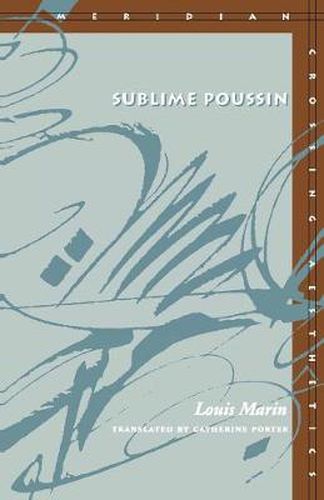Readings Newsletter
Become a Readings Member to make your shopping experience even easier.
Sign in or sign up for free!
You’re not far away from qualifying for FREE standard shipping within Australia
You’ve qualified for FREE standard shipping within Australia
The cart is loading…






Art history and art theory are inseparable. A history of art can be achieved only through the simultaneous construction of a theory of art. These words of the eminent scholar and critic Louis Marin suggest why he considered the paintings and the writings of Nicolas Poussin (1594-1665), painter and theoretician of painting, an enduring source of inspiration. Poussin was the artist to whom Marin returned most faithfully over the years. Since Marin did not live to write his proposed book on Poussin, the ten major essays in this volume will remain his definitive statement on the painter who inspired his most eloquent and probing commentary. At the center of Marin s inquiry into Poussin s art are the theory and practice of reading paintings. Rather than explicate Poussin s work through systematic textual and iconographic analysis, he sets out to explore a cluster of speculative questions about the meaning of pictorial art: Can painting be a discourse? If so, how can that discourse be deciphered? Marin s horizon for interpreting Poussin depends more on the concepts of aesthetic philosophy and the insights of cultural history than on an account of the painter s career or his relationship with his artistic predecessors. For example, he positions several of Poussin s best-known landscapes with respect both to French seventeenth-century debates on the question of the sublime and to the philosophical tradition of reflection on the sublime.
$9.00 standard shipping within Australia
FREE standard shipping within Australia for orders over $100.00
Express & International shipping calculated at checkout
Art history and art theory are inseparable. A history of art can be achieved only through the simultaneous construction of a theory of art. These words of the eminent scholar and critic Louis Marin suggest why he considered the paintings and the writings of Nicolas Poussin (1594-1665), painter and theoretician of painting, an enduring source of inspiration. Poussin was the artist to whom Marin returned most faithfully over the years. Since Marin did not live to write his proposed book on Poussin, the ten major essays in this volume will remain his definitive statement on the painter who inspired his most eloquent and probing commentary. At the center of Marin s inquiry into Poussin s art are the theory and practice of reading paintings. Rather than explicate Poussin s work through systematic textual and iconographic analysis, he sets out to explore a cluster of speculative questions about the meaning of pictorial art: Can painting be a discourse? If so, how can that discourse be deciphered? Marin s horizon for interpreting Poussin depends more on the concepts of aesthetic philosophy and the insights of cultural history than on an account of the painter s career or his relationship with his artistic predecessors. For example, he positions several of Poussin s best-known landscapes with respect both to French seventeenth-century debates on the question of the sublime and to the philosophical tradition of reflection on the sublime.